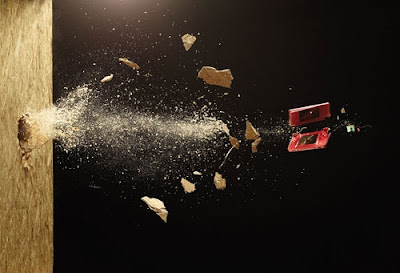Project Cat-Boy – PhatLads Games.
A young boy is confined to his room by his parents gazes out to the world and wishes he was free. Free to look for adventure, free like the cats he sees playing outside…
Suddenly It was all too obvious, this young boy needed to become a cat.
Cats are happy and free, and as would he be if he escaped the confines of his home, so after a swift escape our hero sets off looking for adventure.
Adventure however, had come looking for him.
After walking through his village with little time to spend talking to the locals, Cat-Boy witnesses a UFO crash. This was his chance, a chance for adventure!
Though not the adventure our young friend had planned, Cat-Boy would investigate the UFO crash and the horrors that await him inside.
Once in the UFO Cat-Boy finds a whole host of people trapped in their own twisted realities in the UFO’s computer system, simulating their own idea worlds created by their own psychology. Only by entering these virtual psychological worlds can Cat-Boy find the real persons sanity and bring reality back to them, if, of course, he can convince them to leave their perfect world.
A gameplay blend between the humorous point and click adventure days of yesterday, with the puzzle platform gameplay akin to classic games like Flash Back and Abe’s Oddysee, Project Cat-Boy will make you chuckle as much as it will make you think, but as is the way with psychology, some peoples ideal worlds will be twisted and altogether unpleasant as our hero learns that it’s not all smiles being a cat.
A young boy is confined to his room by his parents gazes out to the world and wishes he was free. Free to look for adventure, free like the cats he sees playing outside…
Suddenly It was all too obvious, this young boy needed to become a cat.
Cats are happy and free, and as would he be if he escaped the confines of his home, so after a swift escape our hero sets off looking for adventure.
Adventure however, had come looking for him.
After walking through his village with little time to spend talking to the locals, Cat-Boy witnesses a UFO crash. This was his chance, a chance for adventure!
Though not the adventure our young friend had planned, Cat-Boy would investigate the UFO crash and the horrors that await him inside.
Once in the UFO Cat-Boy finds a whole host of people trapped in their own twisted realities in the UFO’s computer system, simulating their own idea worlds created by their own psychology. Only by entering these virtual psychological worlds can Cat-Boy find the real persons sanity and bring reality back to them, if, of course, he can convince them to leave their perfect world.
A gameplay blend between the humorous point and click adventure days of yesterday, with the puzzle platform gameplay akin to classic games like Flash Back and Abe’s Oddysee, Project Cat-Boy will make you chuckle as much as it will make you think, but as is the way with psychology, some peoples ideal worlds will be twisted and altogether unpleasant as our hero learns that it’s not all smiles being a cat.
Keep tuned for more info soon :)
Ben and Steve x













